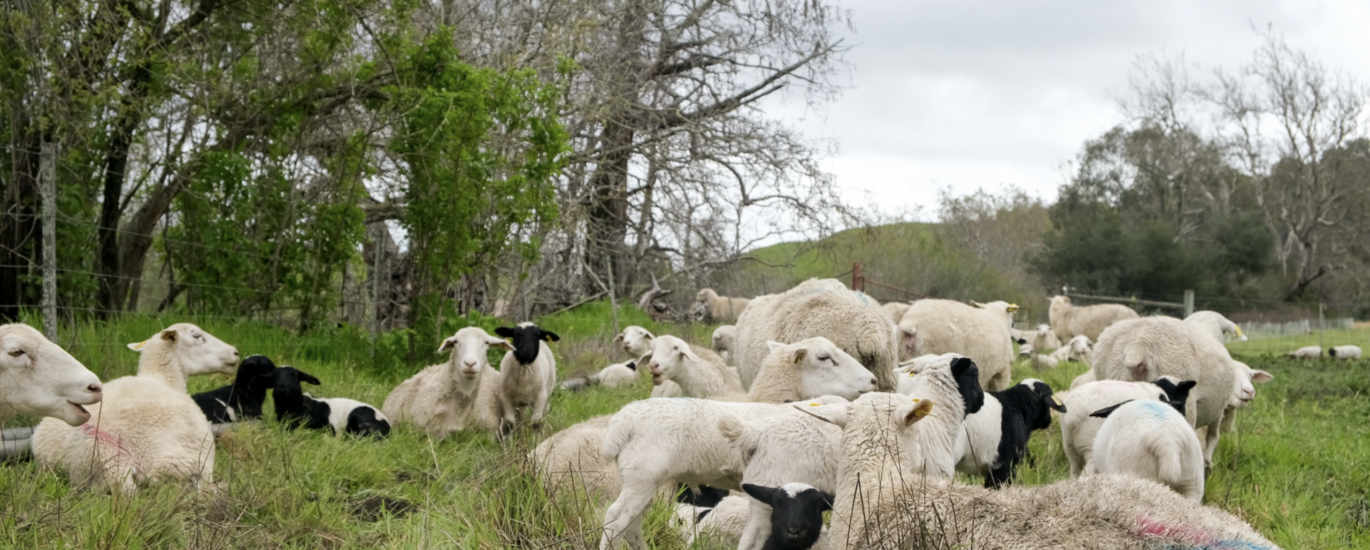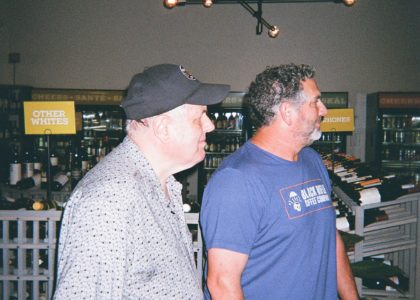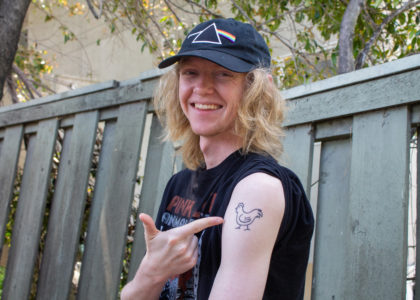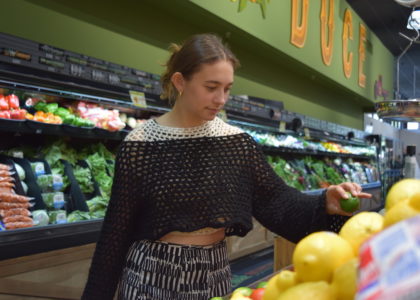By: Gwendalyn Garcia, Carter Herrera, and Angela Carpenter
Emma Kampherbeek was enrolled in Wageningen University in the Netherlands and was highly involved in her university’s Sheep and Goats Study club. When she traveled to Cal Poly in 2021, she saw sheep and solar panels exist in harmony on Cal Poly’s Gold Tree Solar Farm.
Fascinated by the combination of solar panels and agriculture known as agrivoltaics, she decided her Master’s thesis would be on Solar Sheep.
“When I came to Cal Poly, I saw this research opportunity and was like, ‘I want to do this,” Kampherbeek said.
For seven months, Kampherbeek, studied the relationship between solar farms and animal welfare. She wanted to identify the effects of solar panels and the frequency of rotational grazing management on sheep grazing behavior. She hypothesized that solar panels would increase the number of grazing hours of sheep per day.
In November 2022, Kampherbeek’s research was finally published in the international journal: Applied Animal Behavior Science, where she identified that sheep in solar panel fields ate more nutritious food, got more rest, and experienced less heat stress than sheep in pastures without solar panels.
“There is not enough land to do everything we need to do,” said Kampherbeek. “To accomplish all of our goals of the future, combining agriculture and clean energy production is perfect.”
Beth Reynolds, the supervisor of Cal Poly’s Sheep and Goat Enterprise and Animal science professor Zachary McFarlane, wanted to pursue an agrivoltaic study for some time, but never found the team of students or time to complete the research.
Kampherbeek sought to find out if agriculture and clean energy production could beneficially coexist on the same land. She hypothesized that solar panels would increase the number of grazing hours per day.
The grazing frequency of 80 sheep was monitored using collars with data loggers in a 7.5-acre pasture.
Data loggers were placed on the necks of each sheep and used to monitor the upward and downward movements of the animals to determine if they were grazing or browsing the plains.
The study utilized Cal Poly-owned pasture, as well as the university’s Gold Tree Solar Farm. The facility is a 4.5-megawatt project that provides 25 percent of the university’s total electrical needs with solar panels that automatically rotate with the sun.
The solar plant was initially built on 18.5 acres of Cal Poly sheep pasture, so the animal science department could analyze the grazing patterns of sheep for vegetation management research.
In the study, Kampherbeek studied 40 sheep in an area with 60 percent coverage by solar panels and another 40 in an area without solar panels. For 16 days, the study analyzed the effects of solar panels on sheep grazing behavior and different grazing management strategies.
Forage sampling is a common method used to gather information regarding the selection and allocation of the plant material eaten by grazing livestock. This method was used in the research process to estimate the grazing intake of sheep in both enclosures.
“We were mainly trying to see if the sheep grazing at the solar farm helped improve the forage quality or decrease it,” said animal science senior Jason Dubowsky, who assisted Kampherbeek with the collecting of on-site sampling and processing qualitative samples.
Results showed that sheep in solar panels fields spent 70% of their time sheltered in the shade of the panels, grazed 8% more, and rested 71% more than their open-field sheep.
The availability and quality of plants eaten by grazing livestock, time, and weather explain these disparities.
“There was a benefit to those solar farms, to not only the forage and the nutrients, but as well as a benefit to the sheep themselves and their behavior,” Dubowsky said. “The solar panels provided a shade structure to block wind and rain, so it allowed sheep to be more active.”
Kampherbeek was able to accomplish her work with assistance from her Cal Poly team.
“In science, you always wish that what you hypothesize is true,” said Kampherbeek. “To see that it actually was, it was very nice.”
Since being published in Applied Animal Behavior Science, her research has gained coverage by popular publications like News Scientist and the World Economic Forum.
“There is not enough land to do everything we need to do,” said Kampherbeek. “To accomplish all of our goals of the future, combining agriculture and clean energy production is perfect.”
Kampherbeek believes this research is crucial for informing contract grazers about beneficial grazing management practices on solar farms. With the recent news coverage of Kampherbeek’s research, Reynolds has since fielded many calls at the Sheep and Goat Enterprise regarding how a single plot of land can be used for more than one purpose.
“I get calls from people around the world wanting to know about grazing and solar arrays,” said Reynolds. “[the research] has definitely put us on the map as a place that is doing it.”
There is a lot of opportunity with further research of agrivoltaics at Cal Poly’s Gold Tree Solar Farm and its impact on the sheep industry at large. McFarlane is interested in continuing this study in the future.
“It’s really cool that our research is getting so much attention now,” Kampherbeek said. “I never expected that.”






